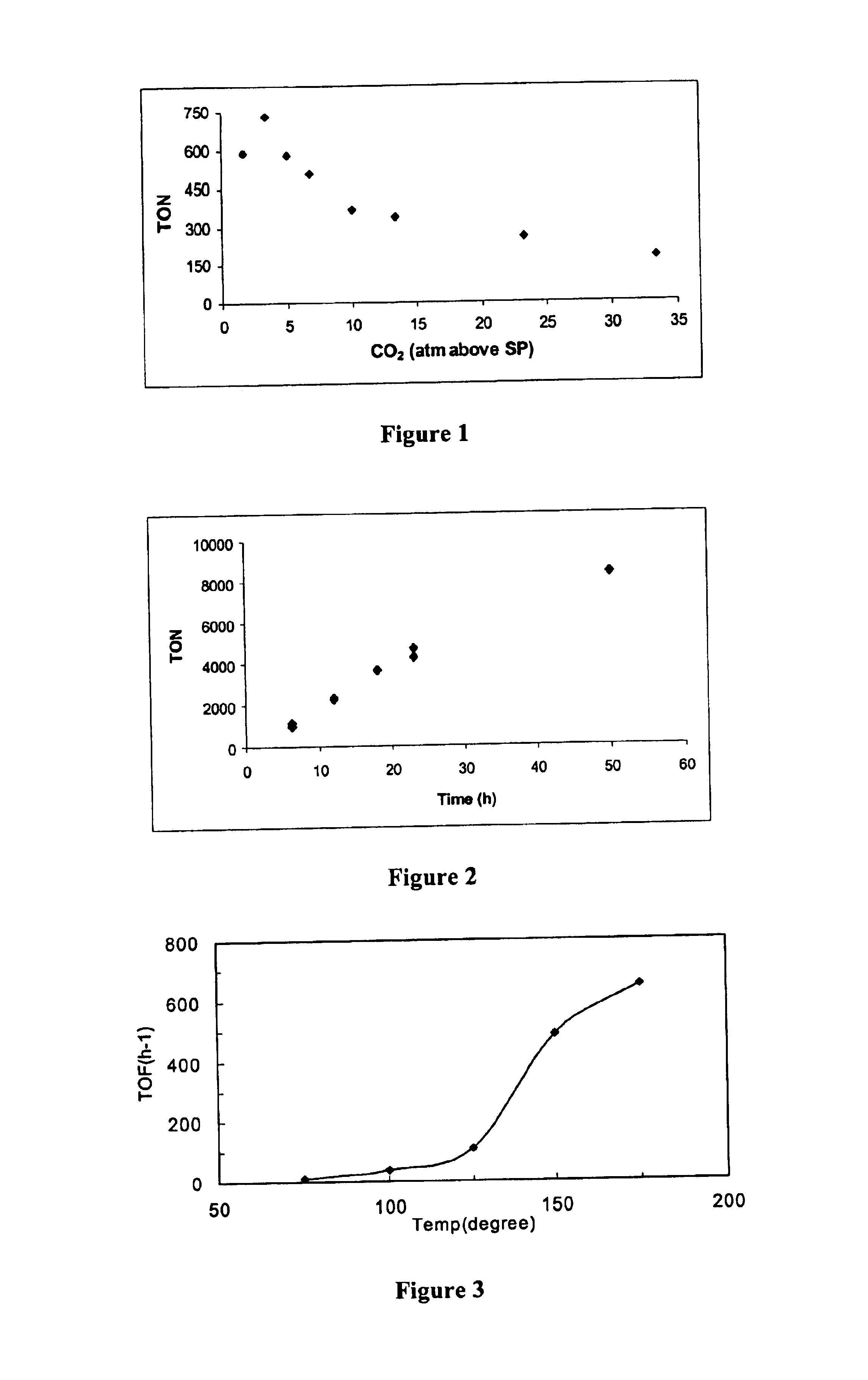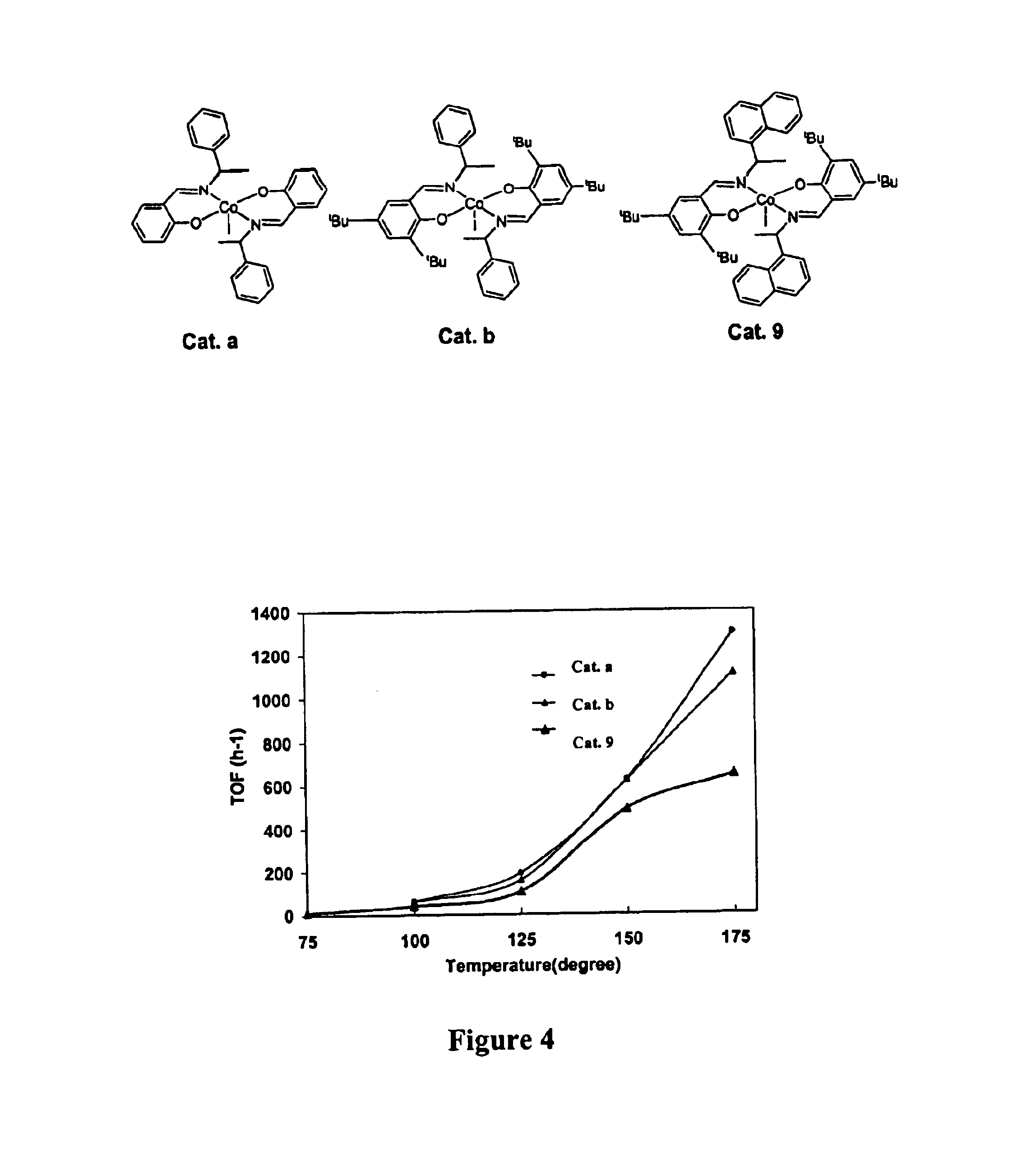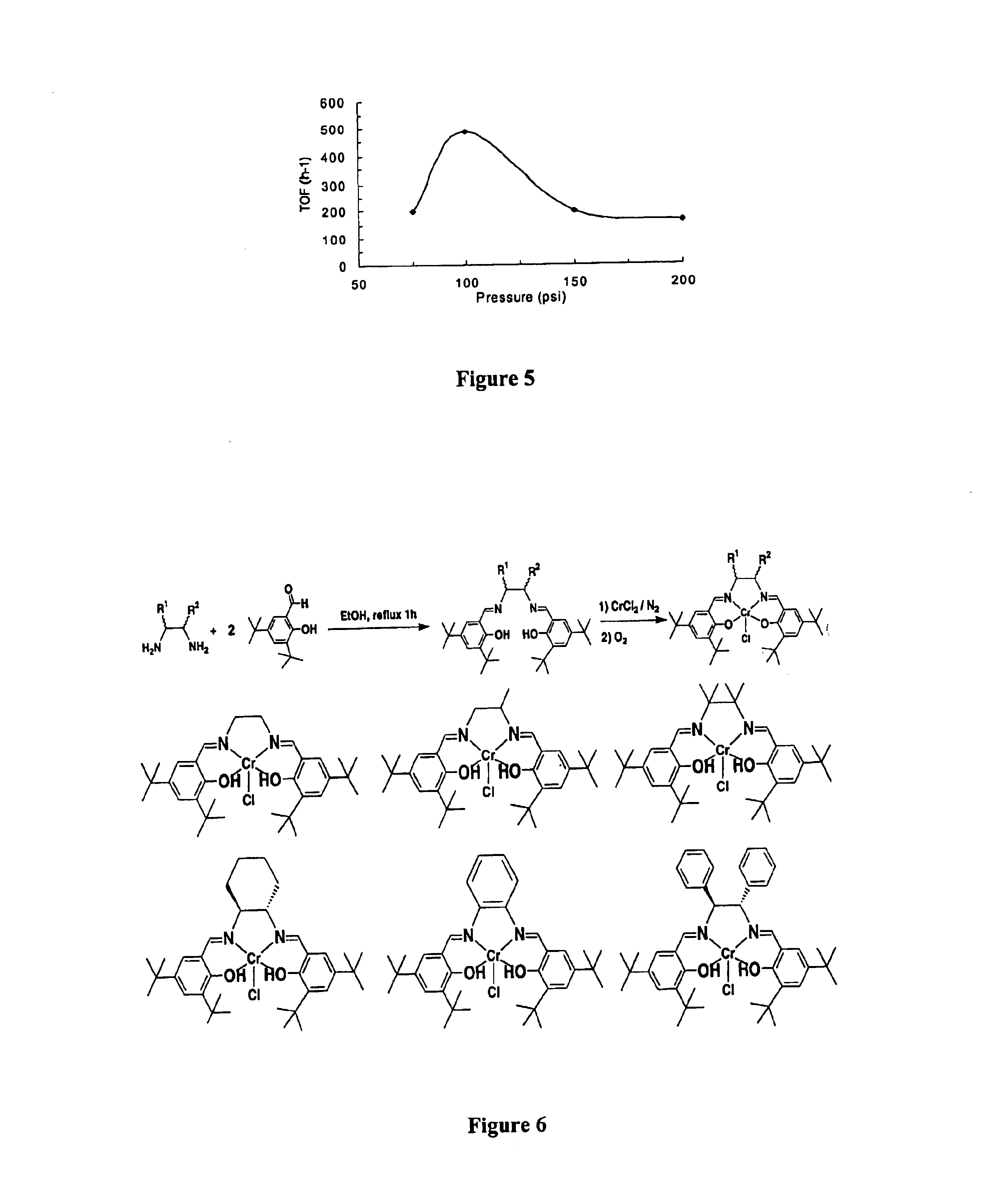Metal-ligand complexes and related methods of chemical CO2 fixation
- Summary
- Abstract
- Description
- Claims
- Application Information
AI Technical Summary
Benefits of technology
Problems solved by technology
Method used
Image
Examples
examples 1-13
I. Examples 1-13
General Information. 1H and 13C NMR spectra were recorded on a Mercury 400 (400.178 MHz for 1H, 100 MHz for 13C) spectrometer. 1H NMR data are reported as follows: chemical shift (multiplicity (b=broad, s=singlet, d=doublet, t=triplet, q=quartet, and m=multiplet), and integration). 1H and 13C chemical shifts are reported in ppm downfield from tetramethylsilane (TMS, ε scale) with the solvent resonances as internal standards. IR data were collected on a Nicolet 5PC FT-IR spectrometer with PC-IR software. Mass spectra were obtained from the Mass Spectrometry Laboratory, University of Illinois (Urbana, Ill.). Elemental analyses were provided by Atlantic Microlab, Inc. (Norcross, Ga.).
Materials. Dichloromethane was distilled over calcium hydride. Tetrahydrofuran (THF) was distilled over sodium / benzophenone. All solvents were distilled under nitrogen and saturated with nitrogen prior to use. CrCl2 (anhydrous, 99.99%) and all other reagents were purchased from the Aldrich ...
example 1
Synthesis of NN′-Bis(3,5-di-tert-butylsalicylidene)-1,2-meso-diphenyl-1,2-diaminoethane. meso-1,2 Diphenylethylenediamine (0.4530 g, 2.13×10−3 mol) was added to a solution of 3,5-di-tert-butyl-2-hydroxybenzaldehyde (1.030 g, 4.40×10−3 mol) in anhydrous ethanol (30 mL) in a round-bottom flask equipped with a magnetic stir bar and a West condenser. The resulting yellow solution was set to reflux for 3 h, during which time copious amounts of precipitate formed. The reaction mixture was allowed to cool to room temperature, water (5 mL) was added and the reaction was allowed to sit overnight at ambient temperature. The mixture was then filtered over a Buchner funnel to yield clean N,N′-Bis(3,5-di-tert-butylsalicylidene)-1,2-meso-diphenyl-1,2-diaminoethane (a yellow solid, 1.296 g, 94% yield). 1H NMR (CD2Cl2): δ 1.28 (s, 9H, -t-butyl), 1.46 (s, 9H, -t-butyl), 4.83 (s, 2H, N—CH), 7.02 (d, 2H, aromatic-H), 7.28 (m, 2H, aromatic-H), 7.32 (d, 8H, aromatic-H), 7.40(d, 2H, aromatic-H), 8.28 (s,...
example 2
Synthesis of 1,2-meso-diphenyl-1,2-ethylenediamino-N,N′-Bis(3,5-di-tert-butylsalicylidene) chromium(III) chloride (1d). Complex 1d was synthesized according to a modified literature procedure.[Martinez, 1995 #29] Under an inert atmosphere of dry nitrogen, CrCl2 (0.275 g, 2.24×10−3 mol) was added to a THF (40 mL) solution of N,N′-Bis(3,5-di-tert-butylsalicylidene)-1,2-meso-diphenyl-1,2-diaminoethane (1.164 g, 1.8×10−3 mol). The reaction was stirred for 3 h under N2, then opened to the air and stirred for an additional 3 h. The reaction was then poured into tert-butyl methyl ether (200 mL) and washed with a saturated solution of NH4Cl (3×150 mL) and brine (3×150 mL), dried (over Na2SO4), and filtered. The solvent was removed from the filtrate under vacuum to yield 1d (1.25 g, 95% yield) as a reddish brown powder. IR (KBr, cm−1): 3420, 2952, 2900, 2864, 2360, 2337, 1771, 1733, 1716, 1699, 1683, 1652, 1645, 1634, 1616, 1558, 1539, 1521, 1506, 1472, 1456, 1436, 1418, 668. HRFABMS: m / z ca...
PUM
| Property | Measurement | Unit |
|---|---|---|
| Temperature | aaaaa | aaaaa |
| Temperature | aaaaa | aaaaa |
| Mass | aaaaa | aaaaa |
Abstract
Description
Claims
Application Information
 Login to View More
Login to View More - R&D
- Intellectual Property
- Life Sciences
- Materials
- Tech Scout
- Unparalleled Data Quality
- Higher Quality Content
- 60% Fewer Hallucinations
Browse by: Latest US Patents, China's latest patents, Technical Efficacy Thesaurus, Application Domain, Technology Topic, Popular Technical Reports.
© 2025 PatSnap. All rights reserved.Legal|Privacy policy|Modern Slavery Act Transparency Statement|Sitemap|About US| Contact US: help@patsnap.com



